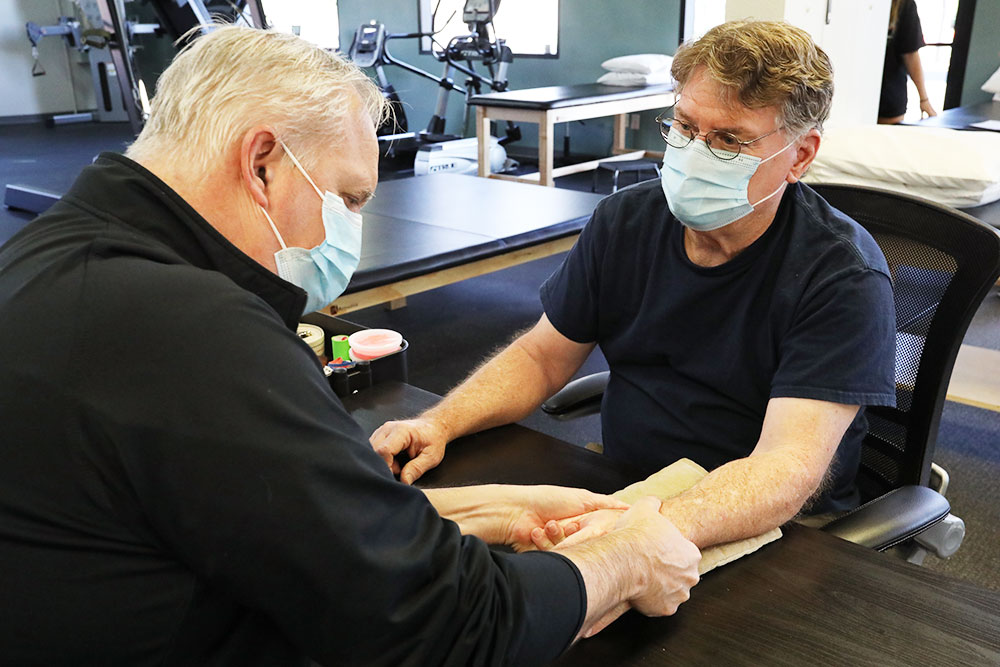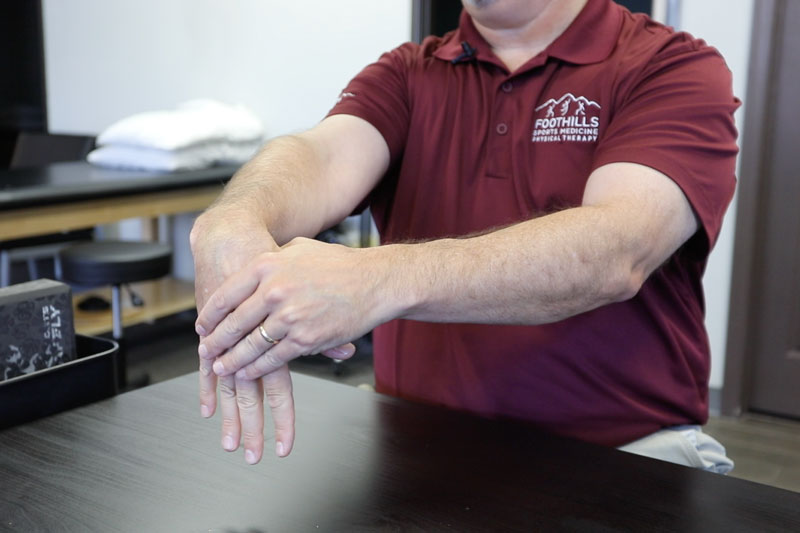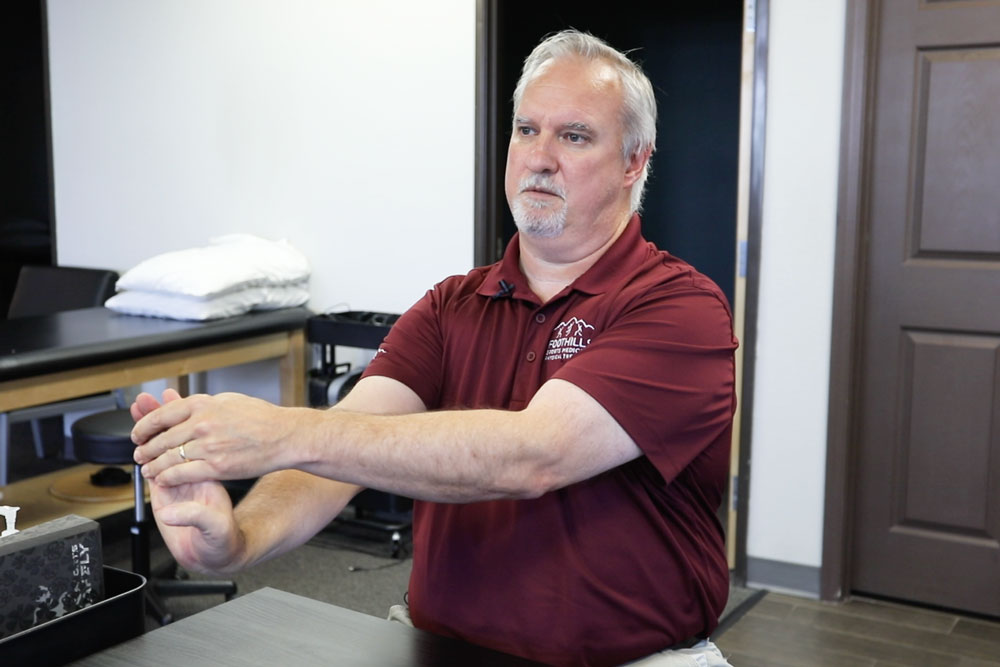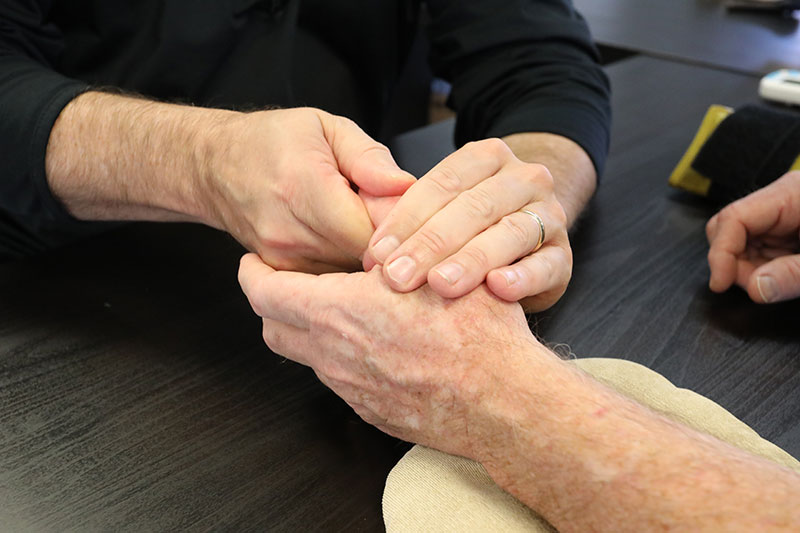Do you experience discomfort, tingling, or numbness when you type, grip objects, or use your hands in other ways? You may be experiencing carpal tunnel syndrome. This syndrome can impact your life and make it more difficult to do certain things that require your hands and/or fingers.
What is carpal tunnel?
Your carpal tunnel is located between your hand and wrist. It’s full of blood vessels, tendons, nerves, ligaments, and bones. If too much pressure and inflammation occur in this area, it can cause the median nerve (which runs through the carpal tunnel) to become compressed.
Since the median nerve provides sensation to the thumb and some of the other fingers, its compression can lead to a variety of unpleasant symptoms. These symptoms are referred to as carpal tunnel syndrome.
Each year, more than 8,000,000 people are impacted by it (according to the U.S. Bureau of Labor and Statistics). Though it most commonly affects adults (between ages 40 and 60), it can occur earlier or later than that.
Causes of carpal tunnel syndrome
There are a variety of potential causes for carpal tunnel syndrome to develop. They include:
- Repetitive motions (such as crocheting, typing, or any other movements that involve the use of the wrist and fingers over and over again).
- Certain medical conditions (such as diabetes, hypothyroidism, rheumatoid arthritis, and obesity)
- Pregnancy
You’re more likely to develop carpal tunnel syndrome at some point in your life if you have one or more of the known risk factors, which include being a female, dislocating or fracturing your wrist, having a family history of small carpal tunnels, or having a job that requires you to do repetitive motions.

Symptoms of carpal tunnel syndrome
Some of the most common symptoms of carpal tunnel syndrome include:
- Weakness in the hand
- Itching numbness, burning, or tingling in the middle and index fingers, or in the thumb and palm
- Tingling that moves upward into the arm
- Trouble holding things
- Shock-like sensations that move from the arm or wrist into the fingers
- Frequently waking up to fingers that have fallen asleep during the night
If you’re consistently experiencing some or all of these symptoms, you most likely have carpal tunnel syndrome.
Exercises to improve symptoms
There are a variety of hand and wrist exercises a person with carpal tunnel syndrome can do to attempt to relieve their symptoms. It’s important not to overdo it with these exercises. Simply stretch the muscles until there is some gentle tension, but not pain. The goal is to carefully stretch the muscles out without causing further injury or discomfort.
Wrist Flexion

To stretch the muscles in the outer part of the forearm, do the following:
- Extend one arm to shoulder height in front of the body.
- Turn the palm so it’s facing downward, then bend the wrist to point the fingers toward the floor.
- Without locking the elbow, use the other hand to carefully pull the bent hand toward your body. You’ll feel a gentle pull in the outer forearm.
- Hold this stretch for approximately 15 seconds, making sure you’re not pulling to the point of discomfort.
- Release the stretch, rest for a moment, then repeat the process five times.
- Do the same exercises on the other arm.
This is also a great stretch to perform before engaging in any activity that involves gripping.
Wrist Extension

To perform a wrist extension, do the same thing you do in the above wrist flexion exercise, but instead of pointing the hand downward with the fingers toward the floor, point the hand upward with the fingers toward the ceiling.
Median Nerve Glide

To relieve pressure on the median nerve, try the following exercise.
- Make a fist with one of your hands (making sure your thumb stays on the outside).
- Uncurl your fingers, stretching the thumb and fingers straight (with the thumb pressed into the side of the hand).
- Bend the hand gently back toward the forearm, then extend the thumb outward.
- With the opposite hand, gently pull the thumb outward until you feel a gentle stretch.
- Hold each change of hand and thumb position for up to seven seconds.
- Repeat the exercise on the other hand.
This exercise can be safely done up to 15 times per day, every day of the week. For further help getting your full wrist function back, contact Foothills Sports Medicine Physical Therapy.




